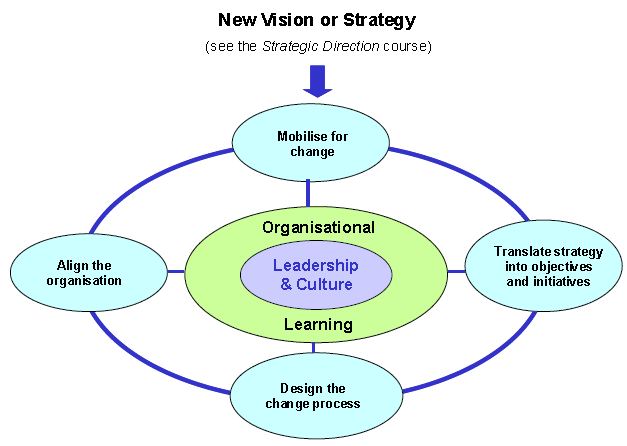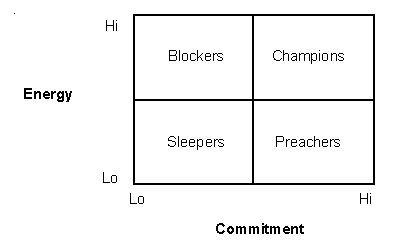
Elements of The Henley Transformational Framework:
Centre of Organisational Learning is Leadership & Culture, driven by Mobilize for change, Translate strategy into objectives and incentives, Design the change process and Align the organisation
Principle:
Areas of management activity involved in moving an organisation from current to future state
Positions associated subject topics that relates to activities, and decision areas in the transformational process

Leadership central to change, more dynamic environment more leadership (Strong power, broad expertise, high credibility + management skills + create team trust + goal sensible to head appealing to heart Kotter, 1995)
Culture key-determinant of success and failure – largely below threshold awareness – start changing change managers
Organisational learning to sustain change
Mobilise – leadership and communication to achieve commitment (avoid egos and snakes – Kotter 1995)
Translate – VMOST projects and plans
Design – architecture of change process
Issues:
Iterative process
HMC, Higgs (2002) focus on Leadership Competence:
Creating the case for change: effectively engaging others in recognising the business need for change
Creating structural change: ensuring that the change is based on depth of full understanding of the issues and supported with a consistent set of tool and processes
Engaging others in the whole change process and building commitment
Implementing and sustaining changes: developing effective plans and ensuring good monitoring and review practices are developed
Facilitating and developing capability: ensuring that people are challenged to find their own answers and that they are supported in doing this
Kotter, 1995 change process:
- ESTABLISH A SENSE OF URGENCY
- FORM A POWERFUL GUIDING COALITION
- CREATE A VISION
- COMMUNICATE THE VISION
- EMPOWER OTHERS TO ACT ON THE VISION
- PLAN FOR A CREATE SHORT-TERM WINS
- CONSOLIDATE IMPROVEMENTS AND SUSTAIN THE MOMENTUM FOR CHANGE
- INSTITUTIONALIZE THE NEW APPROACHES
Beer & Nohria, (2000) two archetypes of change:
- TYPE E – hard change, use of economic value, downsizing
- TYPE O –soft change, learning yardstick of success
Hard to manage both simultaneously
Applications:
To manage and succeed in stakeholder expectations and requirements
Source of The Henley Transformational Framework:
Henley Business School






